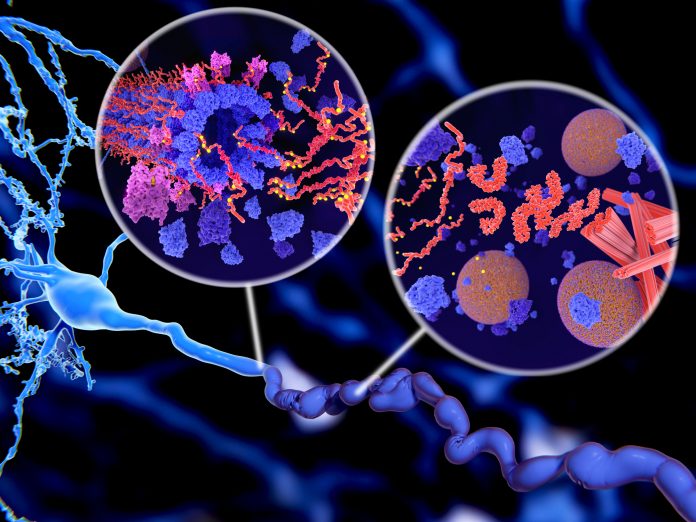
New research from Washington University in St. Louis shows that a focused ultrasound technique called sonobiopsy releases neurodegenerative disease biomarkers, a technology that could be leveraged for the earlier detection of Alzheimer’s disease and other neurodegenerative disorders.
The new research was conducted in the lab of Hong Chen, PhD, associate professor of biomedical engineering in the McKelvey School of Engineering and a professor of radiation oncology in the School of Medicine. Chen and colleagues found that using focused-ultrasound mediated liquid biopsy in a mouse model helped overcome the challenges presented by the blood-brain barrier. The liquid biopsy delivered more tau proteins and neurofilament light chain protein (NfL) into the blood than without the intervention.
“In our proof-of-concept study, we sought to determine whether sonobiopsy is able to release phosphorylated tau species and NfL into the bloodstream by opening the blood-brain barrier,” Chen said. “This demonstration showed that sonobiopsy significantly enhanced the release of pTau proteins and a secondary marker of neurodegeneration into the bloodstream for noninvasive diagnosis for neurodegenerative diseases.”
The sonobiopsy method, described in research published today in the journal Radiology, uses focused ultrasound to target a precise location in the brain. The researchers then injected microbubbles into the blood that to traveled to the targeted location and then pulsate once they reach the target, opening the blood-brain barrier safely. These temporary openings in turn allows the tau and NfL biomarkers to pass through the blood-brain barrier into the bloodstream.
Chen and collaborator Eric Leuthardt, MD, a professor of neurosurgery at the School of Medicine and of biomedical engineering at McKelvey Engineering and first author Christopher Pham Pacia, who earned a doctorate in biomedical engineering from Washington University earlier this year—along with other collaborators—have been working to develop the sonobiopsy technique for a number of years. Their first focus in preclinical models was on biomarkers indicative of human brain cancer.
Using existing liquid biopsy techniques for detecting neurodegenerative diseases have a number of challenges, the researchers noted. Among them are a lack of anatomical information that can pinpoint the location in the brain of the release of the biomarkers, along with the rapid clearance of fluids and a filtering process of the blood-brain barrier—challenges Chen believes can be addressed by sonobiopsy.
For the new research, the WashU team took blood samples from young mice with abnormal tau proteins it the brain, receiving either sonobiopsy of sham treatment. Their investigation showed the sonobiopsy produced a 1.7-fold increase in the normalized phosphorylated pTau-181 tau protein levels and a 1.4-fold increase in the normalized pTau-231 compared with the control mouse group that didn’t receive sonobiopsy.
“While brain tumor behavior and treatment response are dictated by the specific mutations they harbor, the tau protein shows great heterogeneity in the pattern of phosphorylation as well as other post-translational modifications,” Nazeri said. “Current PET imaging and recently developed plasma biomarkers are sensitive to detect tauopathies even in early stages. Sonobiopsy could potentially play a role to further characterize the specific strains of tau protein present in the brain for personalized treatment of people with Alzheimer’s disease and other tauopathies.”
In a second study, the researchers targeted either the hippocampus or cerebral cortex with sonobiopsy in the early stages of neurodegeneration in the tauopathy model, collecting blood samples before and after sonobiopsy. These data showed a 2.3-fold increase in NfL protein present, compared with the control mouse group.
The results show that further research into the method are warranted and the investigators now plan to study the qualitative effects of sonobiopsy on plasma biomarkers and characterize the effects of focused ultrasound parameters to determine an optimal blood collection time. In addition, the team will also seek to determine how the method can be used to help release larger brain-derived protein biomarkers.











